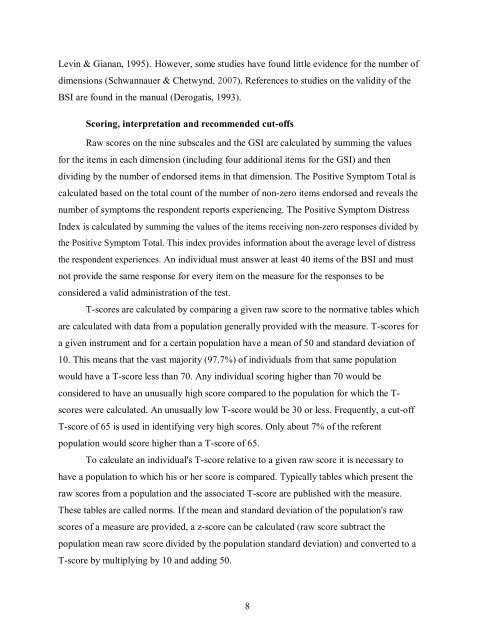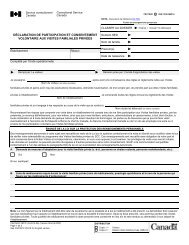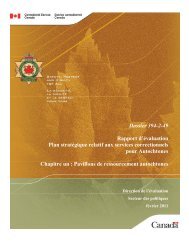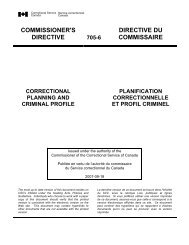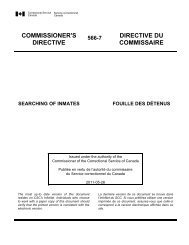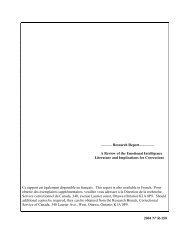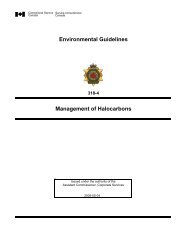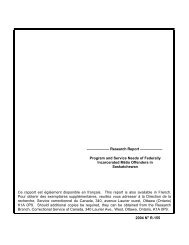The Brief Symptom Inventory (BSI) - Service correctionnel du Canada
The Brief Symptom Inventory (BSI) - Service correctionnel du Canada
The Brief Symptom Inventory (BSI) - Service correctionnel du Canada
Create successful ePaper yourself
Turn your PDF publications into a flip-book with our unique Google optimized e-Paper software.
Levin & Gianan, 1995). However, some studies have found little evidence for the number of<br />
dimensions (Schwannauer & Chetwynd, 2007). References to studies on the validity of the<br />
<strong>BSI</strong> are found in the manual (Derogatis, 1993).<br />
Scoring, interpretation and recommended cut-offs<br />
Raw scores on the nine subscales and the GSI are calculated by summing the values<br />
for the items in each dimension (including four additional items for the GSI) and then<br />
dividing by the number of endorsed items in that dimension. <strong>The</strong> Positive <strong>Symptom</strong> Total is<br />
calculated based on the total count of the number of non-zero items endorsed and reveals the<br />
number of symptoms the respondent reports experiencing. <strong>The</strong> Positive <strong>Symptom</strong> Distress<br />
Index is calculated by summing the values of the items receiving non-zero responses divided by<br />
the Positive <strong>Symptom</strong> Total. This index provides information about the average level of distress<br />
the respondent experiences. An indivi<strong>du</strong>al must answer at least 40 items of the <strong>BSI</strong> and must<br />
not provide the same response for every item on the measure for the responses to be<br />
considered a valid administration of the test.<br />
T-scores are calculated by comparing a given raw score to the normative tables which<br />
are calculated with data from a population generally provided with the measure. T-scores for<br />
a given instrument and for a certain population have a mean of 50 and standard deviation of<br />
10. This means that the vast majority (97.7%) of indivi<strong>du</strong>als from that same population<br />
would have a T-score less than 70. Any indivi<strong>du</strong>al scoring higher than 70 would be<br />
considered to have an unusually high score compared to the population for which the Tscores<br />
were calculated. An unusually low T-score would be 30 or less. Frequently, a cut-off<br />
T-score of 65 is used in identifying very high scores. Only about 7% of the referent<br />
population would score higher than a T-score of 65.<br />
To calculate an indivi<strong>du</strong>al's T-score relative to a given raw score it is necessary to<br />
have a population to which his or her score is compared. Typically tables which present the<br />
raw scores from a population and the associated T-score are published with the measure.<br />
<strong>The</strong>se tables are called norms. If the mean and standard deviation of the population's raw<br />
scores of a measure are provided, a z-score can be calculated (raw score subtract the<br />
population mean raw score divided by the population standard deviation) and converted to a<br />
T-score by multiplying by 10 and adding 50.<br />
8


